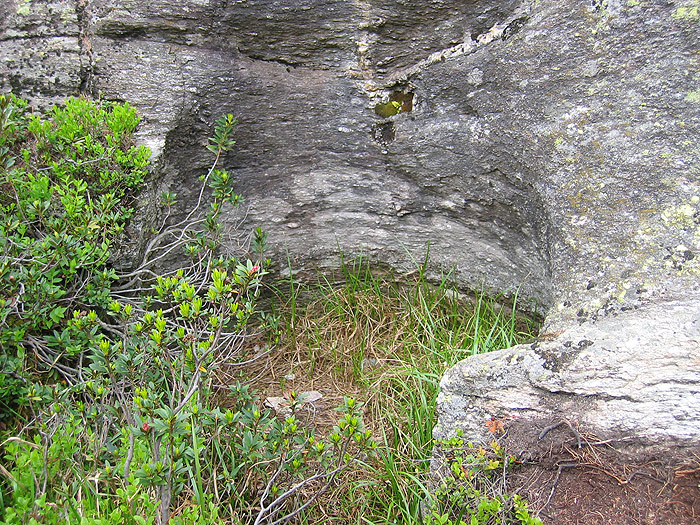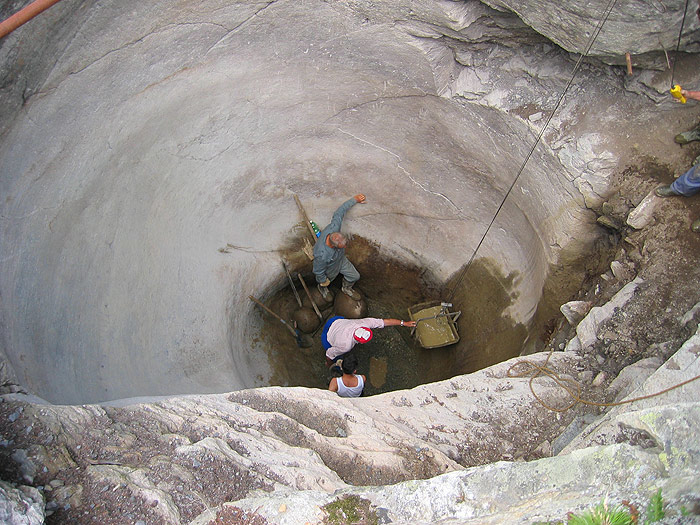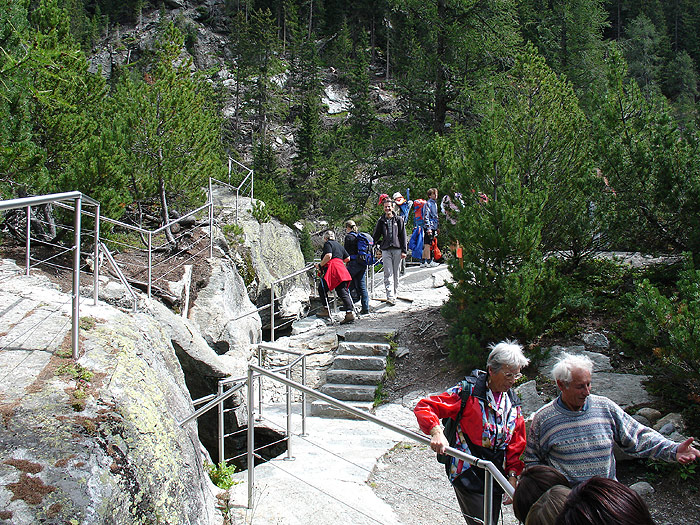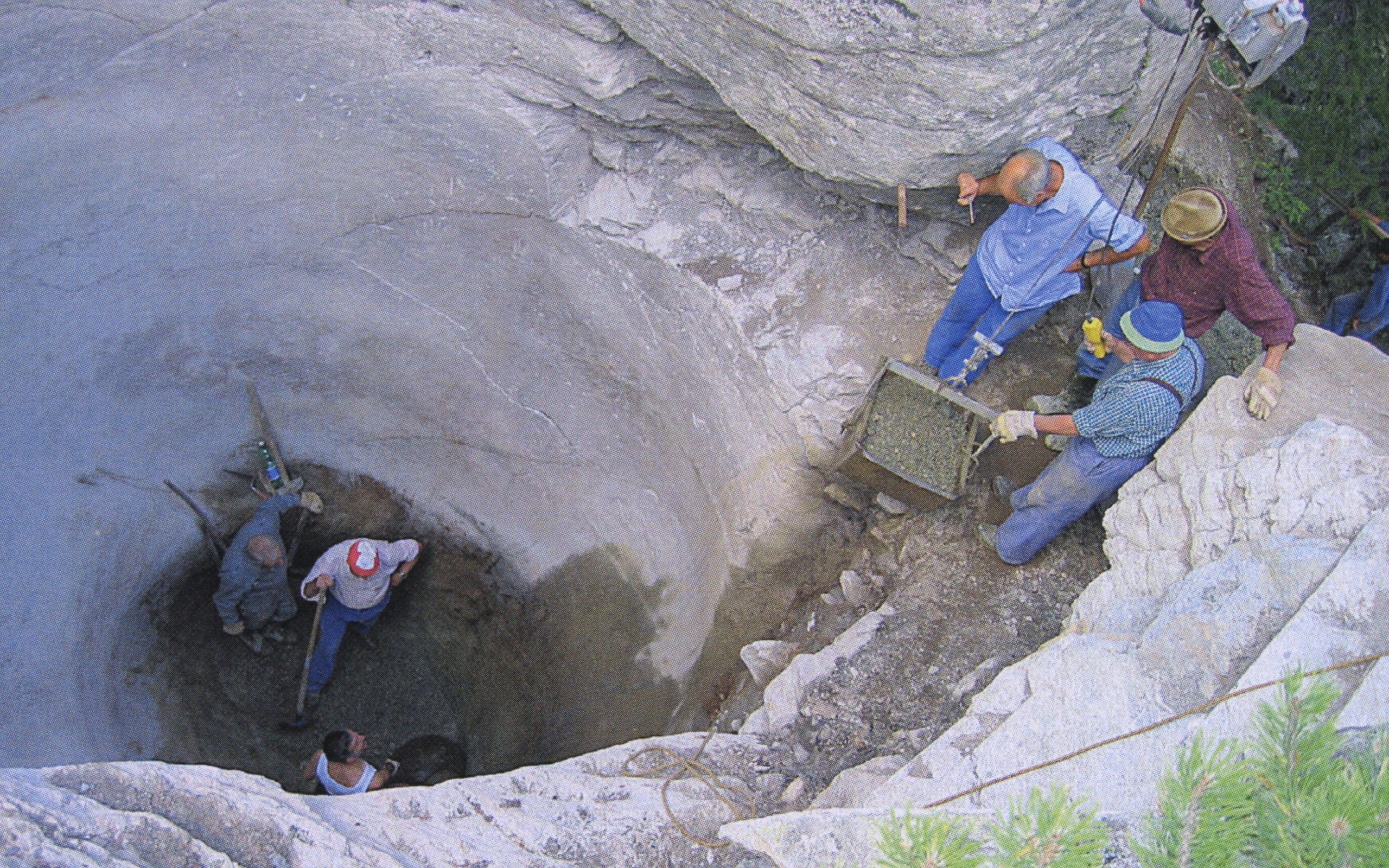History
It is not known who first observed the peculiar erosion effects affecting the rocks of the Moti da Cavagliola. After the withdrawal of the glaciers, which took place approximately 10’000 years ago, vegetation once again covered the high regions of our mountains.
Could it be that some hunters were the first to discover the giants’ pots?
We owe the first written document on the subject to G. Leonhardi, a protestant pastor from Brusio. In his book «Das Poschiavino Tal», published in Leipzig in 1859, he describes «cirkelformige Ausholungen» (round holes) dug in the rocks of the Puntalta gorge.The famous geologist Rudolf Staub, in his map «Geologie der Bernina Gruppe, 1948», places giants’ pots on the Moti da Cavagliola. In his degree thesis (Freiburg, 1957) Aldo Godenzi described at length the basin and the Cavaglia glacial threshold while C. Burga studied the late glaciation period of our valley and published his findings in 1987.
Bearing in mind the example of the giants’ pots situated in Luzern it soon became obvious that an initiative aimed at emptying those present in the Moti da Cavagliola should take into consideration their potential as a tourist attraction.
1975

In the words of Alfonso Colombo, President of the Poschiavo Tourist Board from 1966 to 1994, “as early as 1975 the Tourist Board launched the idea of emptying the pots and started some preliminary work. However, as costs were high and support scarce , the initiative had to be suspended”. Colombo defined the Moti da Cavagliola and its surroundings “the natural monument of Cavaglia”.
1990

The idea of emptying the pots to create a new tourist attraction remained alive and over the years several attemps were made to restart the work. The Poschiavo Boy Scouts, guided by Plinio Tognina and supported by Alfonso Colombo, started to empty the pot closest to the railway.
1994

Another important step forward was achieved by about twenty Rhaetian Railway apprentices from Poschiavo and Landquart, directed by Mario Costa, Aldo Fanconi and Giovanni Lardelli. The first pot was completely emptied and, together the ranger Gianni Zanoli, the trail leading to the panoramic viewpoint overlooking the valley of Poschiavo was prepared.
1995

A study by the Samedan School of Tourism, edited by Pietro Beritelli, was published under the title “The Cavaglia rock pots : evalution, potential, possible development”. The study, which was part of a complex project concerning the organization of tourism in Valposchiavo, underlined the positive impact that the emptied, and therefore fully visible, pots would have on tourism : “practically free from competition given the impossibility of imitating artificially these formations they provide a long term attraction for the whole of Valposchiavo”.
Regarding the potential further development of the site, the Beritelli study highlighted the following features:
a further attraction for tourists and the local population; a location where people can socialize; unique vegetation, interesting geological structure, biotope; panoramic viewpoint; closeness to railway and road; ease of access; free entry.
Further to the Beritelli study attention towards the pots and the natural garden of the Moti da Cavagliola was greatly increased and soon a group of enthusiasts undertook the task of promoting and progressing the project.
1998: The Cavaglia Glacier Garden Association was born
The Association benefits from the contributions of its members and the support of institutions.






